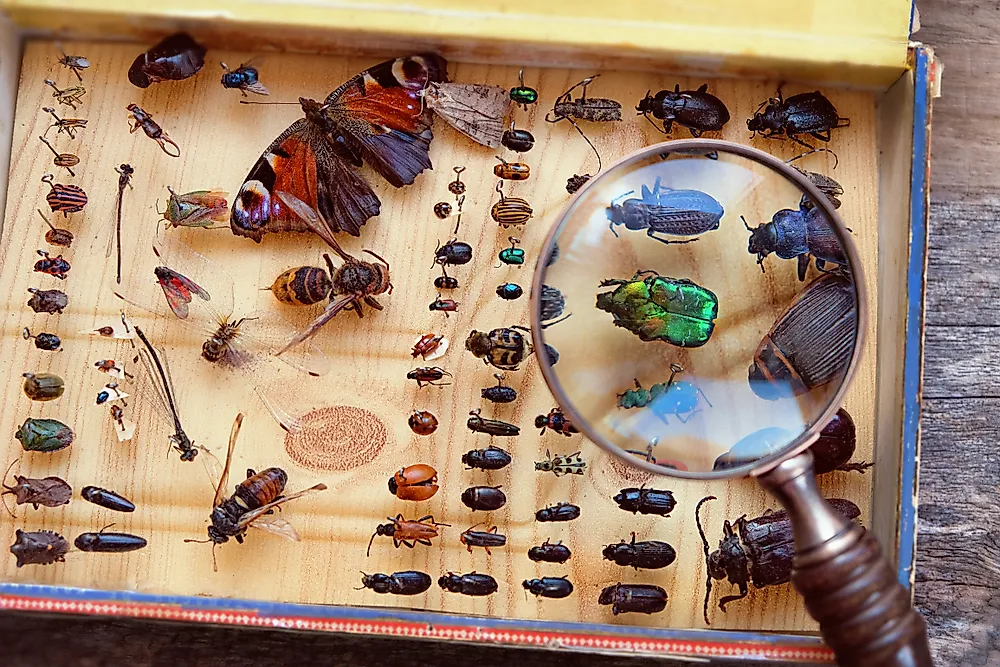How Many Species of Insects Are There?

Insect species are the most diverse groups of living animals in the world. There are millions of them translating to over 90% of animals in the globe. Insects are found in nearly all ecosystems in the world with the highest concentration in the tropics. Scientists are on a mission to establish the number of insect species but have faced numerous challenges making it an ongoing process. Currently, over 925,000 species of insects have been identified.
Characteristics of Insects
Insects belong to Subphylum Hexapoda in Insecta Class. The invertebrates are characterized by having 3 body segments namely the head, the thorax, and the abdomen. Common insects have six legs, a pair of antennae, compound eyes and an exoskeleton. Almost all insects reproduce by laying eggs which metamorphosize through several stages to become adults. A complete metamorphosis starts with egg then larva then pupa and eventually an adult.
Counting the Number of Insects in the World
Conservative estimates put the number of species at two million but can be as high as 30 million. However, biologists are yet to identify over 80% of the presumed number of species in the world.
Some insects thrive in certain seasons meaning that a researcher may fail to count them if he conducts the research when they are in dormant status. In addition, data from different researchers have yet to be compiled to come up with comprehensive data.
Although better and technologically improved methods are employed, it has not yet been established the exact number of insect species in this planet. Use of DNA has revealed even more shocking results that there are even new taxonomies of insects which do not fit in the previously allocated classes of species.
According to entomologists’ estimates, there are over 10 quintillion insects (10,000,000,000,000,000,000) at any given time on earth. The insects can be either crawling, hopping or flying. Other billions are either asleep or in various stages of metamorphosis. The figure makes insects the hugest biomass among terrestrial animals.
In the United States alone, researches have statistics of species in 4 orders at 23,700 Coleoptera (beetles), 17,500 Hymenoptera (bees, wasps and ants) 11,500 Lepidoptera (butterflies and moths), and 19,600 Diptera (flies).
Globally it is estimated that the Coleoptera species are more than 300,000, Lepidoptera 180,000, Diptera over 90,000 and Hymenoptera are over 100,000.
Factors Leading to Diverse Insect Species
There are millions of insect species in the world including some that live in places where human beings have not been able to access. Insects are small creatures that are adaptive to diverse environments. Some have a long evolutionary history coupled with high flight capability.
On the other side, insects have remarkable reproductive abilities which lead to huge numbers of offspring. In fact, the queen of an African termite can lay one egg every 2 seconds translating to 43,000 eggs in a day. A housefly can have 190 quintillion descendants in just 5 months. The highest number of insects is the ants. Statics indicates that there are about 200 million insects for one human being at any one time.











